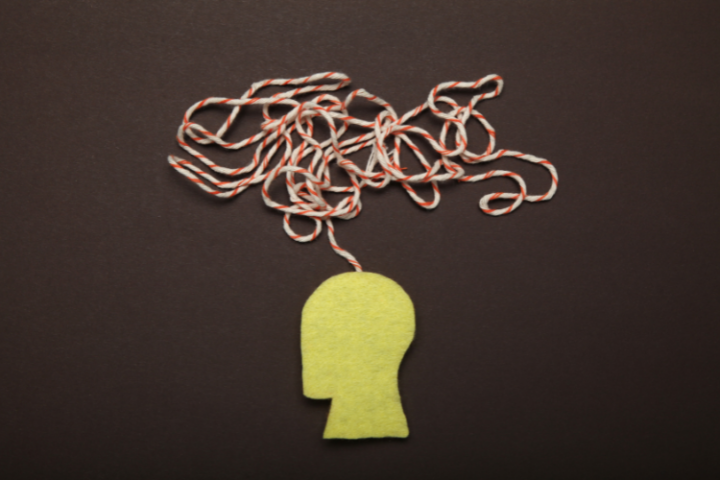by Katherine Jewett, LMFT
Because the usual “drink water and take a nap” isn’t cutting it anymore.
Let’s be honest: the phrase self-care has gotten a little… overexposed. Somewhere between the bubble baths and the “treat yourself” mantras, we lost the plot. You don’t need another list of basic hygiene disguised as healing. What your soul might be craving—what you actually need—is a return to something deeper.
Not more tasks.
Not more pressure to feel good.
But an invitation back to yourself.
This isn’t about perfection. This is about permission—to get honest, get weird, and try things that might just work better than another ten-minute meditation you resent the whole time.
So here are ten therapist-approved, science-backed, slightly offbeat ways to practice self-care that nourish your nervous system, honors your inner world, and reconnect you with what matters.
Let’s begin.
1. Take an Awe Walk—Medicine for the Part of You That Forgot Magic Exists
You know that part of you that feels small in the best way? The one that lights up when you see a sky full of stars or hear music that makes your chest ache?
That’s awe. And it turns out it’s a psychological game-changer.
When we intentionally seek out moments of wonder, we quiet the part of the brain that’s been doom-scrolling and catastrophizing. We drop into something bigger than our to-do lists. Think: looking up at the moon instead of down at your inbox.
Awe doesn’t demand anything from you except your presence. So go outside. Look at something with your full attention. Let it humble you. Let it lift you.
Reflect:
When was the last time you felt wonder on purpose? What might shift if you made space for it weekly?
2. Laugh Like You Mean It—The Nervous System Loves a Good Snort
Laughter is nervous system gold. It’s a full-body exhale. It’s a quick, playful break for the part of you that carries too much.
When you laugh, you’re telling your brain, “Hey—it’s safe here.” That matters. Especially if you grew up in environments where safety was inconsistent, and hypervigilance became a lifestyle.
Laughter softens the armor. It shakes up stagnant energy. It reminds your inner perfectionist that joy isn’t earned—it’s allowed.
So find what makes you laugh until you snort. Let yourself be ridiculous. Watch the silly meme. Send the GIF. Host a one-person comedy show in your kitchen.
Reflect:
Do you allow yourself to be silly without guilt? What parts of you come alive when you stop taking life so seriously?
3. Forest Bathing: Let the Earth Regulate You
No, you don’t need a tent or hiking boots. Just a tree and your senses.
Nature speaks to the oldest parts of our nervous system—the parts that remember what stillness feels like. The woods don’t need you to perform. They just need you to be. And that alone is medicine.
Take a slow walk. Let your senses lead. Feel the crunch of leaves under your feet. Smell the dirt. Look up at the trees like they’re old friends. Because they are.
This is co-regulation with the Earth itself.
Reflect:
What happens in your body when you slow down enough to really notice the world around you?
4. Play Isn’t Optional—It’s Oxygen for the Soul
Somewhere along the way, many of us got the message that play is for kids, or worse, it’s “wasted” time. But play is not frivolous. It’s how we build trust, process life, and reconnect to joy.
Play is how the brain integrates safety. It tells the younger parts of you: “We’re allowed to feel free.” And when our nervous systems feel safe, it’s not just great for our minds and our relationships, it can have a huge impact on our physical health.
Try watercolor painting with no agenda. Dance in your socks. Make a blanket fort. Get wildly mediocre at something you enjoy.
Reflect:
What did you love doing as a kid before someone told you it wasn’t practical?
5. Get Creative—Let What’s Inside You Come Out
Art is a portal. It lets the parts of you that don’t have words find expression.
You don’t need talent. You need courage. Draw. Journal. Make a playlist. Write a bad poem. Don’t worry about how it looks—ask how it feels.
In parts work, this is honoring the inner creator—often the exile who was told to shrink or stay silent. Creativity is a reclamation of voice, and it can be surprisingly healing.
Reflect:
What’s been living inside you, waiting for a safe space to come out?
6. Nostalgia: A Time Machine for the Heart
Scrolling through old photos or hearing that song from your senior year? That’s not indulgent—it’s regulating.
Nostalgia is a self-soothing tool. It brings you back to moments where you felt safe, loved, or fully alive. And your nervous system doesn’t know the difference between memory and moment—it responds to both.
Let yourself feel the sweetness. Let it fill your cup.
Reflect:
Which memory brings a smile to your face instantly? Can you sit with it and savor it a little longer than usual?
7. Intentional Solitude: Sometimes the Best Company Is You
Solitude is not loneliness. It’s choosing your own company on purpose.
Quiet time—without distractions—gives your brain space to defragment. It helps you tune into your needs, your parts, and your boundaries. It’s a “closed for recalibration” sign on the door of your life.
The key is intention. This isn’t disappearing to avoid others. It’s turning toward yourself with compassion.
Reflect:
Do you give yourself quiet time—or do you avoid your own presence? What part of you might be afraid of what you’d hear in the stillness?
8. Savor Something—Slow the Heck Down
Savoring is the radical act of not rushing through what’s good. It’s choosing to stay with the moment instead of running to the next.
This is a relational skill, too. When we savor connection, we show our nervous system that love is available, not scarce. It turns a quick hug into a moment of safety, a bite of food into a ceremony, and a glance into something sacred.
Reflect:
What’s one tiny joy you could stretch out today instead of glossing over?
9. Kindness as a Self-Care Shortcut (Yes, Really)
Kindness isn’t just for others—it regulates you.
Doing something generous or thoughtful floods your body with oxytocin and dopamine. It reminds the nervous system that we are wired for connection and compassion.
Even small acts—like texting someone you’re thinking of or holding the door—can shift your emotional state. So caring and kindness can also serve as self-care.
The trick? Give without overextending—compassion, not codependence.
Reflect:
What’s one way you could practice kindness that feels aligned—not draining?
10. Try Something New—Novelty Is a Nervous System Reset
The brain loves patterns, but it also lights up with novelty. Trying something new—big or small—can jolt you out of autopilot and bring you back to life.
Cook a recipe you’ve never tried. Take a different route home. Say yes to something that feels 20% out of your comfort zone.
This isn’t about being reckless. It’s about expanding your world in bite-sized ways. That’s how growth happens: one brave step at a time. And those moments of “tingle” you create in your brain are great ways to promote self-care.
Reflect:
Where have you gotten stuck in a loop? What’s one tiny twist you could add today to shake it up?
Let’s Land This Plane…
Self-care isn’t always pretty or polished. Sometimes, it’s messy; sometimes, it’s weird; and sometimes, it’s the most profound act of rebellion you can commit in a world that profits off your burnout.
You don’t have to do all ten things. Maybe just one.
Start where it feels kind. Start where it feels curious. Start where it feels true.
Your nervous system is listening. Your soul is paying attention. And your future self? They’re already whispering: “Thank you.”
Which of these self-care practices spoke to you most? Which ones are you already doing, and which ones feel like a stretch? Share your thoughts in the comments—I’d love to hear what resonates.











